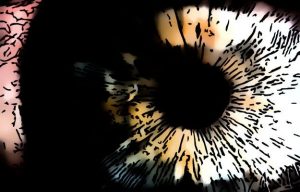Siouxsie’s Office Adventure
please click here to download and play Siouxsie’s Office Adventure
you will be re-directed and have to click on the link again
Siouxsie’s Office Adventure
When beginning to craft my interactive story, I had to first think about what the main theme of the story would be. Because the interactive story had to give the reader alternate routes to the same conclusion, I had to work backwards from the story’s ending. I filtered through ideas and decided to disregard any that weren’t rich enough to provide alternate paths. Although the first conception of my story involved a tale about my dog’s adventures and a suspenseful thriller, I decided upon a story that exposed the mind of a character who suffers from anxiety.
The anxious mind, in a way, operates like a “Choose Your Own Adventure” novel because the anxiety sufferer often has to choose between difficult thought processes that drive certain actions. As someone who has anxiety, I know about this process (ruminating) all too well, so in this way, this is also my story.
My process behind planning for Siouxsie’s Office Adventure started with creating a story map with pen and paper, where I planned out two separate event paths to the same conclusion. I choose to use pen and paper for the initial stages in the story production, as with using these materials I am able to record my thoughts as they quickly change, allowing for more immediacy in the planning process. Bolter (2001) discusses how the mind works to move along a string of ideas: “Vannevar Bush…wrote that “…the human mind…works by association. With one item in its grasp, it snaps instantly to the next that is suggested by the association of thoughts, in accordance with some intricate web of trails carried by the cells of the brain…””(Bolter, 2001, p.42).
When I was happy with my story web, I began to type the script into Twine, paying careful attention to what words or phrases I wanted to use to trigger the next event. This was important for me, as I felt that the way a trigger or hyperlink appears helps the reader to organize what the focus is of the new information stream. In a way, the hyperlink label frames your next experience: “The principal task of hypertextual fiction on the Web or stand alone form is to use links to define relationships among textual elements, and these links constitute the rhetoric of the hypertext”(Bolter, 2001, p.28).
I then previewed the story, making sure that it thematically flowed. After this, I choose pictures from Unsplash, resizing and ‘cartoonizing’ the images I found. I did this to give the story a more graphic feel. Adding the images took a long time at first, as I am not well versed in html, but after doing it a few times my level of comfort increased, and the appearance of the coding language became natural to me.
A big dilemma that I had was whether to put the photo credits directly under the pictures or to shift them downwards, away from the readers direct sightline. I felt that the credits competed for visual attention with the story, so in the end, not knowing how to change the colour of the citation text, I decided to keep the appearance of the story more minimal to give the best experience to the reader.
I proofread the story many times after all of the elements had been implemented, but I will be honest, that as the author of Siouxsie’s Office Adventure, I have a deep desire for its readers to engage with all possibilities of the story’s plot. I know that this is selfish of me, as hypertext in an interactive story doesn’t exist to merely layer integral information, but as Bolter (2001) argues, to provide a customized experience for the reader: “Because every path may define an equally convincing and appropriate reading, the hypertext’s multiplicity (or overdetermination) suggests a changed relationship between the reader and and the text” (p.35).
Bolter, J. D. (2001). Writing space: computers, hypertext, and the remediation of print. New York, NY: Routledge.
click here to see my photo references https://jenriego.wixsite.com/siouxsie/blank

